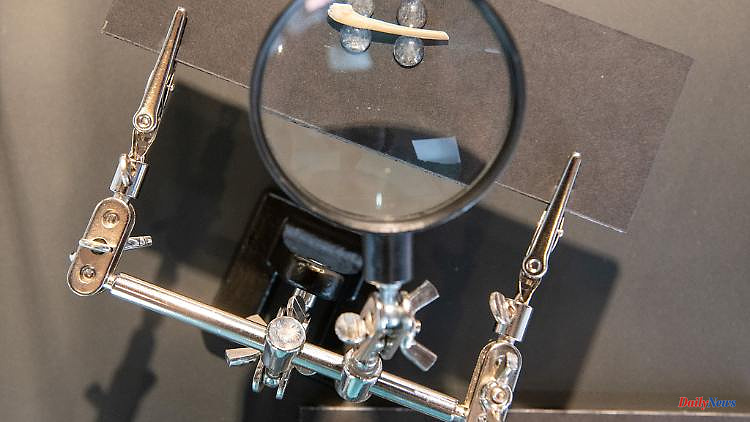Neanderthals have often been underestimated. The fact that they did not survive because of their lack of intellect and limited hunting skills is now disproved by new bone finds.
Blaubeuren (dpa / lsw) - Neanderthals had a more varied diet than was long assumed. According to researchers, their diet also included small animals such as snow grouse and rabbits. This is underpinned by new bone finds from the "Hohle Fels" cave in the Swabian Jura, which were presented on Tuesday in the Prehistoric Museum (Urmu) in Blaubeuren. This is the best evidence of such hunting methods for central Europe, as the museum and the University of Tübingen announced on Tuesday.
Until now, it was assumed that Neanderthals primarily hunted large game such as reindeer, wild horses or woolly rhinos, explained the scientific director of the museum in the Alb-Donau district, Nicholas Conard. For a long time, however, they were not believed to be capable of the more complex hunt of small and more agile animals such as birds and rabbits.
The excavations now presented are said to be around 65,000 years old and show signs of battle on bird bones, which must have come from Neanderthals. "Most evidence suggests that joints were broken apart and flesh was detached from the bone," said the archaeologist from the Department of Ancient Prehistory and Quaternary Ecology at the University of Tübingen.
The thesis that the Neanderthals died out because of their diet has at least become weaker as a result of the finds, Conard found. The exact reasons for their extinction have not been fully clarified to this day. One thesis is that the ancestors of modern humans died out due to their lack of mental abilities and limited diet. This assumption must now be revised, said the director of the Urmu, Stefanie Kölbl.
With the help of new excavation methods, the researchers succeeded for the first time in uncovering tiny bird bones from the millennia-old soil layers in the cave near Schelklingen. The cave "Hohle Fels" is part of the Unesco biosphere area Swabian Alb. One of the most important finds from the cave is the "Venus from Hohle Fels" - one of the oldest representations of a human body.
The bones from the time of the ancestors of modern humans can be seen as "Find of the Year" until September 12th in the Urmu in Blaubeuren.












